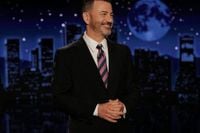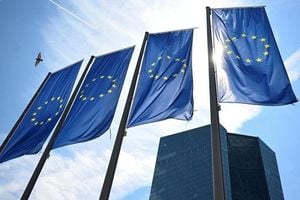Jimmy Kimmel’s return to late-night television on Tuesday, September 23, 2025, wasn’t just a comeback—it was a bona fide media event. After a brief but headline-grabbing suspension from ABC, the host of "Jimmy Kimmel Live!" stepped back onto the stage and into the center of a national conversation about comedy, controversy, and free expression. And America tuned in—by the millions.
According to Nielsen data cited by Variety and The Hollywood Reporter, more than 6.26 million viewers watched Kimmel’s comeback episode, making it the most-watched regularly scheduled show in the program’s 22-year history. That’s not just a bump; it’s a 343% surge from the previous season average of 1.4 million viewers per episode, and a far cry from the 1.1 million who tuned in during a ratings slump in August 2025. The show’s 0.87 rating among adults aged 18–49 was its highest in a decade, and the episode’s digital reach was even more staggering—Kimmel’s monologue racked up over 26 million views across YouTube and social media platforms within hours, shattering his previous online records.
But how did we get here? Kimmel’s suspension was triggered by remarks he made on September 15 about the assassination of conservative activist Charlie Kirk. The comments, delivered during a previous episode, sparked outcry from media groups and regulators, leading Disney-owned ABC to pull the show off the air. Affiliates like Nexstar and Sinclair Broadcast Group quickly preempted his program in dozens of markets, supported by a nod from the Federal Communications Commission (FCC). As a result, nearly 23% of U.S. households—including some major cities—were unable to watch "Jimmy Kimmel Live!" during the blackout period.
Disney justified the move as a bid to “avoid inflaming a tense situation” during a sensitive national moment. In a corporate statement, the company explained, “We have spent the last days having thoughtful conversations with Jimmy, and after those conversations, we reached the decision to return the show on Tuesday.” Yet, as The Economic Times and Page Six reported, Disney CEO Bob Iger was also motivated by concerns about regulatory fallout and financial risk, with some insiders suggesting that the company’s legacy—and Iger’s own—were at stake.
For Kimmel, the high-wire act of returning to the air was both personal and political. He opened his comeback episode with a mix of self-aware humor and raw emotion, greeting viewers with the smirk and candor that have become his trademarks. “I’m back, somehow,” he quipped, arms wide. What followed was eight minutes of razor-sharp, politically charged stand-up that skewered everyone from network executives to conservative firebrands—and, not least, himself. “You know it’s serious when even Guillermo’s lawyer called me,” he joked, referencing his longtime sidekick Guillermo Rodriguez, who returned with a deadpan, “So, what’d I miss?”—a moment that drew one of the night’s biggest laughs and helped defuse speculation about behind-the-scenes drama.
Yet the night’s most talked-about moment came when Kimmel addressed the controversy head-on. Fighting back tears, he told viewers, “I have no illusions about changing anyone’s mind.” He went on to clarify, “It was never my intention to make light of the murder of a young man. I don’t think there’s anything funny about it. I posted a message on Instagram on the day he was killed, sending love to his family and asking for compassion. I meant it and I still do.” Kimmel revealed that he had personally reached out to Erika Kirk, the widow of Charlie Kirk, to extend his condolences. He acknowledged that his words may have seemed “ill-timed or unclear” and said he understood why some people were upset.
Despite the apology, Kimmel didn’t back away from his signature edge. He took aim at ABC’s corporate overseers, quipping, “I love working for Disney. I mean, where else can you make jokes and still get time off for it?” He added, “Honestly, I’d say thank you to the execs who pulled the plug, but I don’t think they’re allowed to watch this show anymore.” The crowd roared, and online audiences ate it up: within 16 hours, the monologue had more than 15 million views on YouTube, and by press time, the full opening segment had nearly 20 million views—a record for Kimmel’s digital presence.
Not everyone was cheering. President Donald Trump, who had previously derided Kimmel for “bad ratings” and called for his cancellation, took to his social media platform Truth Social to blast ABC’s decision to reinstate the host. “I can’t believe ABC Fake News gave Jimmy Kimmel his job back,” Trump posted on September 23. “The White House was told by ABC that his Show was cancelled! Something happened between then and now because his audience is GONE, and his ‘talent’ was never there.” Kimmel, for his part, anticipated the jab and fired back during his monologue, “Well, I do tonight!” He later joked, “(Trump) tried his best to cancel me. Instead, he forced millions of people to watch the show. That backfired bigly.”
The episode also featured a tongue-in-cheek sketch with actor Robert De Niro playing a mob-style FCC enforcer, threatening Kimmel if he didn’t praise “Sir Trump.” The bit, which quickly trended online, underscored the episode’s blend of satire and pointed social commentary.
Industry analysts and media insiders were quick to label the night a “rare broadcast event,” crediting the ratings surge to a perfect storm of controversy, curiosity, and clever marketing. As one Variety source put it, “Kimmel just did what no one thought possible in 2025, he made late night feel urgent again.” The spike was even likened to the ratings bump Stephen Colbert received after CBS announced the cancellation of “The Late Show” earlier in the summer—a reminder that, in the world of late-night TV, nothing drives viewership like a little drama.
Yet the story isn’t just about numbers. Kimmel’s return has reignited debate about the boundaries of comedy, the responsibilities of broadcasters, and the power of corporate interests in shaping what Americans see on television. Several celebrities and commentators have voiced support for Kimmel, framing his suspension and comeback as a test of free expression in the entertainment industry. At the same time, critics continue to question whether his remarks crossed a line, and whether the show’s massive ratings are a sign of public support or simply the magnetism of controversy.
As for what comes next, the future of “Jimmy Kimmel Live!” remains uncertain. Will Kimmel continue to push boundaries, or will network pressures force him to pull back? For now, one thing is clear: when late-night TV becomes appointment viewing in the streaming era, something extraordinary has happened.
For Jimmy Kimmel, controversy may be a storm—but it’s also the wind at his back.





